(Cleckwise from left: Frida Kahlo's The Love Embrace of the Universe; the stain glass curtain at the Bellas Artes; and the umbrella canopy at the National Museum of Anthropology)
With a week to spare in between engagements in the US towards the end of May, my daughter suggests a quick trip to Mexico City. It is just a five-hour direct flight from New York (including the time difference). You don’t need a visa if you have a US visa, and she has already curated and booked a relaxed yet comprehensive itinerary.
This would be our first visit to Mexico. Our encounter with the country is limited to watching the Oscar awarded movie Roma (2018) on the universal theme of collective solidarity in relationships; and other movies like Which Way Home Is, Sin Nombre and Maria Full of Grace about the desperate attempts by Mexican migrants to illegally enter the US. We have also heard the relentless rant about immigrants threatening the peace and prosperity of the host nation. It will be nice to visit the land of the ancient Mayan and Aztec culture, meet the local people, and see the ground reality first hand.
Also, our visit coincides with the presidential elections that will elect Mexico’s first lady president. We have just been through the election hangama in India and the idea of watching history being made in Mexico is tempting. And of course, the anticipation of gastronomic delights—authentic churros, enchiladas, tacos and tamales and the creamy guacamole. Actually, all of these are mere happenstances; the real attraction is a chance to visit the Frida Kahlo museum!
How does one decode a country? There can be multiple ways. We choose the lenses of our interest—food, art, culture—to learn about Mexico. This informs our itinerary.
So here we were: the last week of May sees us hop on to the Mexican Airline flight from JFK to Mexico City. We have chosen a hotel in Roma Norte, a verdant neighbourhood with shaded walkways, squares with beautiful statues, parks, and mural paintings and some fancy wayside eateries and pubs offering mezcal, the Mexican drink made from agave. It feels safe to move around, mix with the crowd (many mistake us for locals, thanks to our Indian features!) and even indulge in casual conversations in skeletal English or monosyllabic Spanish. The hotel manager turns out to be quite well-informed and chatty about everything—the coming election, local culture and recommendations for our itinerary.
Past Meets Present: History, Faith and Protests
Day 1 begins with a walking tour of the town centre. The 4-5 km drive to the town centre takes 30 minutes due to the office rush.
Our guide gives us a brief historical background, the Spanish conquest, the struggle for Independence and events thereafter.
He also shares the mythological origin of Mexico. Legend has it that when the Aztec forefathers were on a journey to find land, they received a divine message to look for a sacred sign: an eagle, atop a cactus growing on an islet, eating a snake. They spotted the sign on an island in Lake Texcoco and named the land Tenochtitlan. In time, this came to be known as Mexico in common parlance. The story is narrated with great pride and the leitmotif of eagle-cactus-snake is a reminder of the divine benediction. The Mexican flag carries it, as do other places of import.
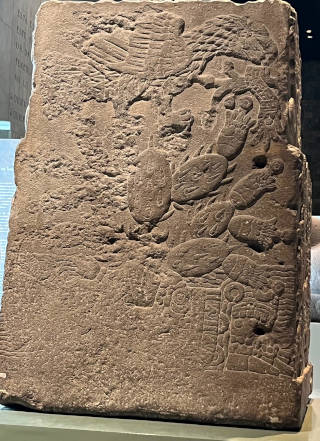
(The emblem of eagle-cactus-snake)
The main city square is called Zocalo (Plaza de la Constitucion). It derives its name from the remains of the plinth (called zocalo) of a column intended for a monument to Mexican Independence from the Spanish rule, which for various reasons, was never built. It is a large cobbled arena with the Presidential Palace (with a bell tower, used for making announcements) on one side and the Mexico City Metropolitan Cathedral on the other. These structures are the two most powerful protagonists in the historical narrative of Mexico, and a befitting first introduction to the city.
Today, the public square is used for parades, national celebrations, political protests and artistic and cultural events. Since it is election time, we find several political groups holding rallies, one of them even by academicians.
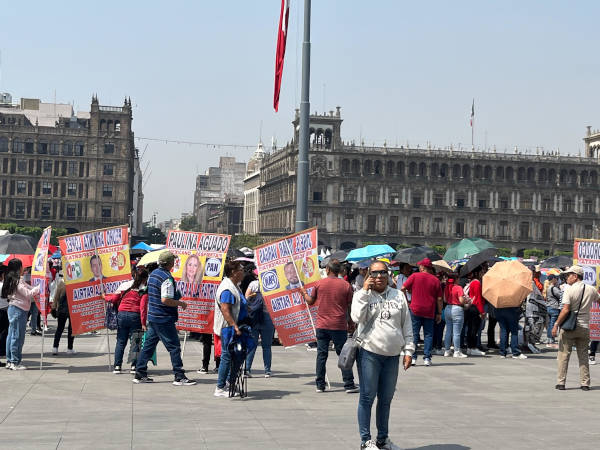
(Protestors at Zocalo)
Since the Presidential Palace is inaccessible, we visit the Cathedral, erected on the site of Aztec ruins and dedicated to the Assumption of Mary. The red and stone-coloured facade has beautiful intricate miniature carvings. The front portal bears the coat of arms of Mexico and the statue of the Assumption of Virgin Mary. The cathedral boasts two of the largest 18th-century organs in the Americas. The guide informs us that the cathedral architecture integrates Gothic, Baroque, Plateresque, Churrigueresque and Neoclassical styles as it took almost 250 years (1573-1813) and generations of architects and sculptors to finish it. It draws visitors of all Mexican races and the mingled style is seen as a symbol of social cohesion.
The guide draws our attention to the structure tilting to one side and reminds us that Mexico City was founded on an island in a lake. The soil underneath the cathedral and the surrounding area is soft and is sinking at an alarming rate of a couple of centimetres every year. The monument needs regular restoration.
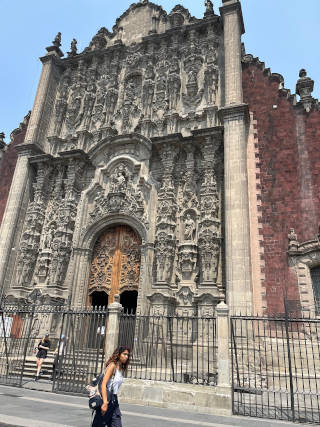
(The Mexico City Metropolitan Cathedral sits on the site of Aztec ruins and dedicated to the Assumption of Mary)
The Cathedral is popular because it houses the chapel of Our Lady of Guadalupe, the patron saint of Mexico, and the Altar of Forgiveness, to which convicts of Spanish Inquisition were taken before execution for mercy plea.
Adjacent to the Cathedral is an open-air museum, the Templo Mayor Museum, a World Heritage site of the Mayan and Aztec archaeological ruins, including the famous Mayan calendar (now preserved at the Museum of Archaeology), and the Mexican ‘coat of arms’.

(The open-air museum, Templo Mayor)
A 10-minute walk from Zocalo takes us to the nearby Palacio de Bellas Artes—the magnificent Centre of Arts. Made of white Carrera marble, it has a beautiful dome of yellow crystal that can be seen from afar. We encounter some artists who are silently protesting in front of the Arts Building. They have created an art installation by tying a makeshift rope between two pillars on which some tattered clothes are hanging. The arms of the shirts are fluttering in the breeze in helplessness. I am reminded of similar installation in Poland during the Solidarity Movement where theatre artists had created a clothes-line and artists were washing and hanging clothes in the city square, like a theatrical performance. Once again, we fail to understand the actual grievance but the import hits home. Art speaks the unspoken.
We are told that Bellas Artes was supposed to open in 1910 to commemorate the centennial celebrations of the Mexican War of Independence but eventually opened in 1932. The grand building has an aura about it. It is revered as a ‘cathedral of arts’ in Mexico, and regularly holds formal performing arts events, literary programmes and the galleries display works of well-known artists. The exterior design is famous for the Neoclassical and Art Nouveau style and murals by artists like Diego Rivera (Frida Kahlo’s husband) and others, while the interior features Art Deco style heads of serpents, Mayan masks, bronze statues of the Aztec and Mayan goddess of water.
The most captivating part of Bellas Artes is the grand theatre and its stain glass curtain adorned with coloured glass from Tiffany’s, New York. The curtain weighs 24 tons, yet it can be raised in 18 seconds by hydraulic lift. There is no other stage curtain like this anywhere in the world. It depicts scenery of lakes, volcanoes, cacti and the flora and fauna of Mexico. The theatre tour stands out in my memory long after we leave the Bellas Artes!
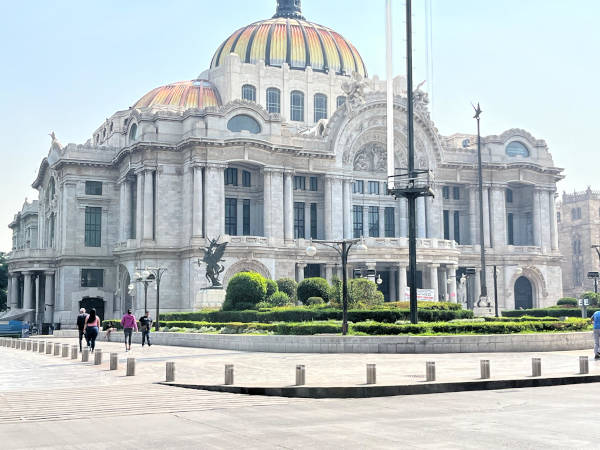
(Pallacio the Bella Artes)
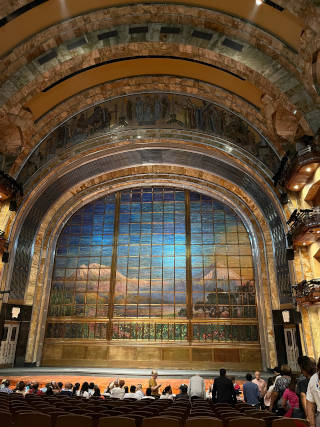
(The stain glass curtain in the theatre)
We head to the bespoke Rosetta restaurant in Roma Norte for late lunch. The table was booked about a month in advance. From the cultural and artistic high, we are ready to experience the gastronomic high of culinary art.
The array of dishes, the ambience and the service at Rosetta have to be experienced to be believed—the green tomato salad, the delectable corn in cheese sauce and the dessert are an aesthetic delight. I must mention the famous guava rolls that disappear within an hour of arrival. You’ll find long queue outside the Rosetta patisserie for the melt-in-the-mouth bakes.
Like the satiated, drowsy lotus-eaters in Tennyson’s poem, we return to the hotel in dreamy languor.
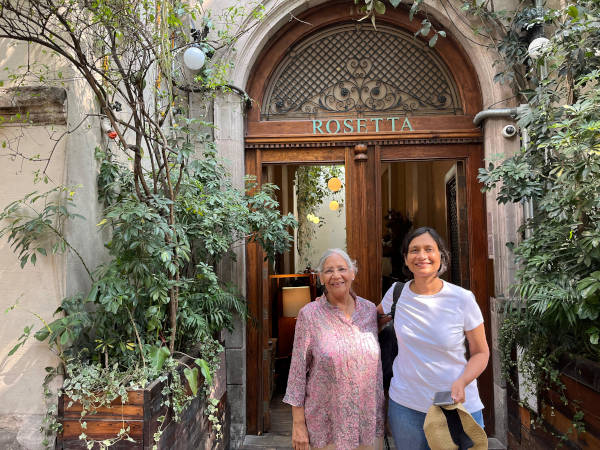

(A dellightful lunch at Rosetta. We had reserved a table a month in advance)
A Spirit Called Frida Kahlo
Day 2 is reserved for Frida Kahlo.
I had seen her work at the Victoria & Albert Museum in London in summer 2018 and was struck by the brutal honesty of her work, the visceral exposure of the body and the stoic endurance of pain in a tumultuous life.
Born at the beginning of 20th century (1907- 1954), her life was cut short, yet her legacy lives on. She brought Mexican art to world attention. Sotheby’s in New York sold her self-portrait Roots for a stupendous sum of $5.62 million in 2006. The visit to the museum is my homage to the resilient spirit of this great artist.
The distance is only 10 km from our hotel, but the drive takes almost 45-50 minutes through the internal streets of the city to reach Coyoacan and we finally catch the first glimpse of the Frida Kahlo home— La Casa Azul (the blue house) with its cobalt blue walls with red trimming.
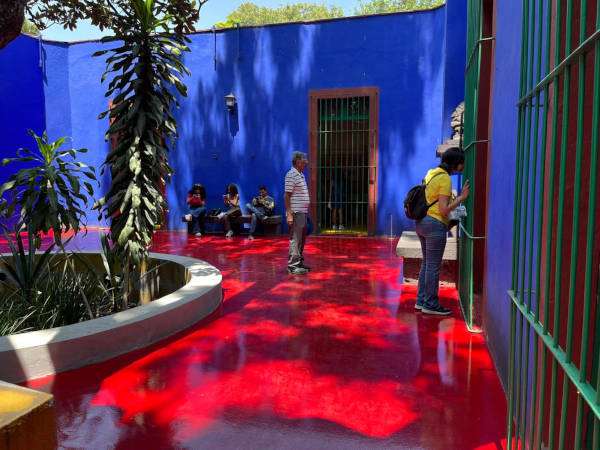
(Casa Azul, Frida Kahlo's house, which houses the Frida Kahlo Museum)
It is best described as ‘A place full of places’, as the placard reads:
“This is the house where Frida Kahlo lives 36 of her 47 years of life. It is also the space that lived forever in her heart … the place that shapes Frida as a daughter, sister, member of a community, friend, spouse, painter, teacher (and a) legend … Within these walls, Frida builds spaces to know herself better … (it is) a home, window to the world, refuge-workshop, ideological statements, and gathering place … where Frida remains alive to this day”.
Frida’s home serenades Frida the artist. It is both the signifier and the signified. Polio-stricken in childhood, Frida meets with a life-altering and life-shattering bus accident at 18 that damages her spine and pelvis—requiring 30 surgeries later in her life. She has to wear a cast and a corset (that she paints on) all her life. The pelvic wounds cause greater damage; she faces difficult pregnancies that leave her childless.
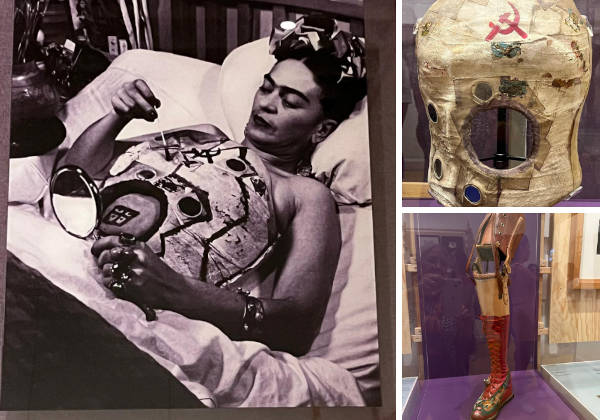
(Frida painting her corset, the corset and the leg cast)
I am at her ‘home’ that understands her pain, caresses her and heals her. The museum captures the process of her healing and the emergence of an artist. The pain is located in the body and her brush pierces the anatomy, seeking the brutal catharsis of the wounded soul, to discover the ‘self’. The 55 self-portraits, like reflective selfies, are an attempt at soul searching. She writes: “I paint self portraits because I am so alone, because I am the person I know best.”
Her life is a binary at many levels: The cultural heritage of a German father and a Mexican mother; Mexican iconography and rootedness and the world view; and her marriage to Diego Rivera, divorce and remarriage to him. The year of the divorce, 1939, becomes her most productive year. The self-portrait The Two Fridas captures the suffering of her grieving heart and the search for solace.
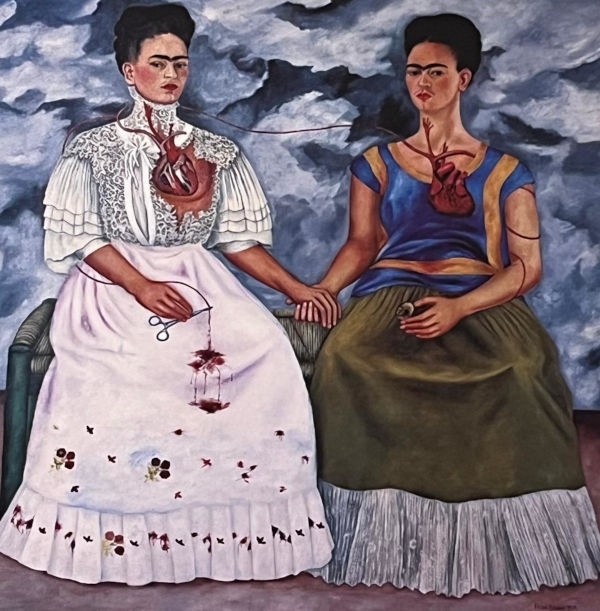
(Two Fridas, a self portrait)
This is how I decode this painting: It shows the symbiotic binaries of her two selves, holding hands, seated side by side. On the left, in a white wedding dress is Frida, the European identity, and on the right is Frida, the indigenous Mexican persona. There are two arteries emerging from the heart of the Mexican Frida, one connected to a picture of Rivera held in her left hand and the other reaches out to the exposed heart of her European self. The artery from the open heart is bleeding onto her white dress of the European self and here is the twist—the European hand holds a pair of surgical scissors to clamp the bleeding artery. The pain is arrested.
Another feature of the painting is the intentional asymmetry in the physical features in this and the other self-portrayals—the sharp gaze of the eyes that fix you with an overwhelming question, eyes that mirror the pain with a strange stoicism, never vulnerable or beaten. Similarly, the exaggerated long neck grants a majestic grace of a persona that refuses to be cowed down. In all self-portraits, the fingers are unusually long, signifying ‘proactive action’, not passive suffering.
Amid severe physical challenges, Frida leads an assisted but active life: she joins the Mexican Communist Party; invites artists, philosophers and litterateurs to her home for discourse; she even teaches painting at a school of fine arts. The body is frail but the spirit is strong. Her painting station tells of her physical incapacitation. It is specially designed to hold paint and brushes, a large easel supports the canvas and the ergonomic chair ensures spine support. There is always a rear-view mirror placed strategically around her to give her a multi-angular perspective. There is one even above her bed, to allow her to view herself lying in pain with a mask of death visible in the rear mirror.

(Frida’s work station)
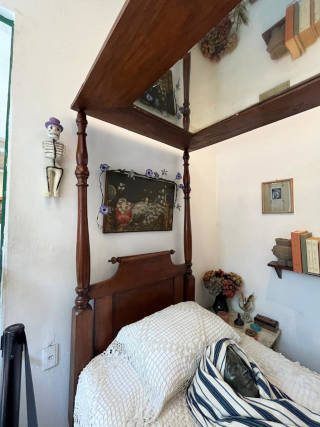
(Frida's bed)
The viscerally exposed depiction of the human body reminds me of Picasso’s work decades later. Frida can be called a precursor of the Cubist movement. Mayan artefacts can be seen all over her home and whether it is the painting Two Fridas or her binary lineage, she takes pride in her local identity that is capable of healing her.

(The Love Embrace of the Universe, the Earth (Mexico), Myself, Diego and Senor Xolotl)
Today, the world of art calls her a symbol of counter culture of the 20th century. Frida’s last painting of watermelons just before her death is called Viva la Vida—‘long live life’—her last message to the world.
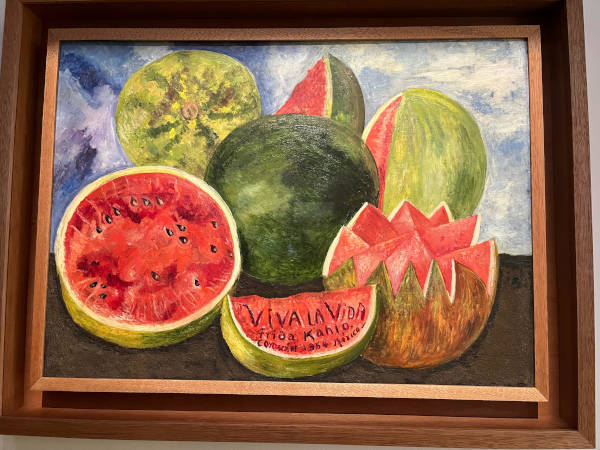
(Viva la Vida, Watermelons)
We come out of the Frida museum in a stupor and meander through the nearby Coyoacan habitat as an epilogue to the Frida Kahlo home.
We walk around The Mercado Coyoacan, a covered market with shops selling Mexican handicrafts, local fruit and vegetables. Then we walk over to Park Jardin Centenario that has the popular Coyote-fountain and settle down on a bench to soak in the atmosphere and reflect on our profound experience that day. It is time for some churros and ice cream. It has been a hot summer day.
We drive back to the hotel, thinking of Frida Kahlo, the intrepid warrior:
On Frida’s canvas, pain and beauty blend,
A story of resilience, love’s transcend.
Each stroke a piece of her vibrant soul,
A journey through heartache to be whole
- Anonymous
The Election Day: ‘It Is What It Is’
On our third day in Mexico, June 2, a Sunday, Mexico wakes up to a normal election day. We do not notice anything unusual—there is no hustle bustle, no long queues at polling booths or even a sign soliciting voters as you would see in India. By afternoon, it is clear that Claudia Sheinbaum of Morena party has defeated her rival Xochitl Galvez of PAN party by garnering 58% votes. She has made history by becoming the first woman president of Mexico.
Strangely, there is no jubilation on the streets. We come to know of a celebratory gathering at the Zocalo grounds on the phone internet. The TV in our hotel room has no news channels. Late evening, I ask our friendly hotel manager about the tepid reaction. His reply is cryptic: ‘It is what it is’. Upon further probing, he reveals that a woman president is not uncommon in democracies in Latin America. Dilma Rousseff in Brazil and Cristina Fernandez in Argentina and several others have had that distinction before Sheinbaum. And they have not won because of who they are but the support of large voter base of their political parties.
Sheinbaum has promised to carry forward the social programmes of her predecessor and mentor, Andres Manuel Lopez Obrador, popularly called AMLO. On top of it, she is a Jew in a country of Roman Catholic majority and I get the point.
When I talk to some more people, women this time, the ambivalence prevails: some women are happy, some are not. Sheinbaum is seen as a softie. The twin problems of migration and violence perpetrated by Kalashnikov-wielding drug mafia require tough measures. They have a self-acquired the status of a para military force, striking terror among civilians. Can Sheinbaum put together a concrete plan of action to catch the big fish and contain violence? I hope she can—we have known women who might have been catapulted to power as a puppet but who came into their own to become more powerful than patriarchal leaders. Time will tell.
We shrug aside such ruminations as we embark on a day trip to Teotihuacan to see the pyramids (they are not resting places of mummies). The tour is pre-booked with an English-speaking guide. It is a full day excursion, 30-odd miles into the wilderness, and I have nothing much to report on the pyramids except that they are great structures of the Sun and the Moon pyramids, so I will skip the details.
National Museum of Anthropology on Mahatma Gandhi Road
Day 4 is for the Anthropology Museum, situated about 3-4 km from the hotel. We are pleasantly surprised when the cab drops us at the museum by Mahatma Gandhi Road. We also discover that there is Librerias Gandhi, the biggest chain of bookstore in Mexico, started in 1971. (Wow, that is a decade before the Attenborough movie!)
The museum is situated a good 10-minute walk inside the sprawling Chapultepec park. The entry and movement of visitors is under strict surveillance, but it is unobtrusive. This kind of security is missing in the town, even on election day.
The museum is vast (20 acres); most visited; with modern architecture employing large glass walls, sleek escalators and empty spaces to allow movement around the art objects, observe unhurriedly, pause and reflect. I would put this museum at par with some of the best museums in the world.
There are about 23 exhibits from pre-Columbian heritage of Mexican history, ancient Mayan and Aztec civilisation. One certainly needs a guide to grasp the iconographic significance of the installations and artefacts. It may require hours if not days to visit all the exhibits. We make a selection and start with the central courtyard which has a large umbrella-shaped installation in the centre. Other exhibition halls are around the periphery of the courtyard. There are well articulated signages at the entrance of every hall with brief introduction of the theme, the period and the exhibits. One can view them in any order. I will confine myself to only the Mayan calendar, the umbrella installation and a travelling installation Tu.

(The umbrella)
The umbrella in the inner courtyard of the museum is known as El Paraguas. A concrete pillar holds up an umbrella canopy. Tropes and icons of pre-Columbian art like snakes, jaguar and eagle are engraved on the pillar. The guide informs us that the jaguar and eagle on the pillar symbolise the opposite elements in nature that join to sustain and uphold the massive umbrella, i.e. Mexico. It is also the mythological tree of the pre-Hispanic Indians that upholds the modern Mexico. We are told that like an inverted fountain, when the water falls from the umbrella, it is a sight to behold.
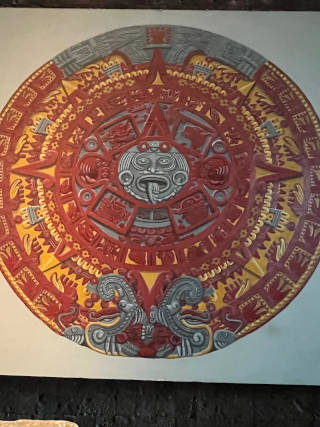
(The Mayan calendar)
The other most popular artefact Mexico is identified with is the Mayan calendar. It is the fastest moving item in the gift shop. The Mayan calendar is a system of calendars used in pre-Columbian times. The placard informs the visitors that in ancient times, the sculpture was used as a sacrificial altar and also to stage fights between warrior races. Referred to as the ‘Stone of the Sun’, the calendar disk is divided into four areas, each with a sun. In the centre is the face of the deity Xiuhtecuhtli emerging from the centre of the earth, sticking its tongue out like a knife. The calendar follows a complicated formula with 20 as the base unit to read past and future dates. The guide does explain the calculations but it all a blur now.
As we come out, the last piece we see is an installation called Tu (You) by the contemporary Mexican artist Rivelino. Based on the concept of ‘equality’ the installation shows two large white fingers facing each other, without touching. At first, I think that the art piece echoes the missed connection between Adam and God, painted by Michelangelo on the ceiling of the Sistine Chapel, but I soon learn that Rivelino’s concept is different. He uses a known tactile object and turns it into unfamiliar philosophical strangeness. Then I read the placard and the enormity of the meaning hits me hard. The concept is so profound and so contemporary. Without diluting the message, I reproduce the inscription on the placard:

(The art installation,Tu)
“This sculpture was conceived to question the complex concept of equality….it operates in two spaces: the physical and the realm of memory. In the physical realm ‘You’ interacts in… National Museum of Anthropology. In the realm of imagination, ‘You’ addresses the meaning of pointing to the other, of being equal and at the same time being different, leading the observer to a crucial question: What is the essence of equality?
With two fingers facing each other without confronting; appearing white when made of bronze and seeming true when they are fantasy, Rivelino presents the ambiguity, ambivalence, and incomprehension that the concept of equality suffers from… nothing in them suggests hierarchy of any kind: their formal identity reflects an evident conceptual equality… three main cases are posed: the others facing each other (them); they are facing me (The others-me); and all together in the transition (from me to us). In an unequal world, the piece invites the viewer to question their stance on such an important topic as equality among human being.”
Tu brings the epiphanic moment of the Mexico trip; so simple yet so profound. It is an idea that resonates with me.
We wind up the Mexico City trip with the ambivalent lesson of the binaries experienced: The pain and resilience of Frida’s work; the rootedness of the ancient civilization and the modernity of Tu; and the ‘will she, won’t she’ of the first woman president elect in a patriarchal society; and the peace loving, helpful and kind laity. A country that has the healing power of a Frida Kahlo; the ancient wisdom of a Mayan calendar; the universal message of Tu and future of democracy in the hands of a new woman President, is going to find its own destiny. Amen to Viva la Vida.
Toolkit for Mexico
- What to pack: In Mexico, the weather is consistent throughout the year. One can travel any time. Just carry a hat, sun-screen, an umbrella, water bottle and good walking shoes.
- Visa: You do not need a visa if you have a US visa or you are from the US, Canada or the EU.
- Planning: Research and plan every day in advance. Lonely Planet offers extensive information. Pre-book hotels/Air B&B, museums and other tours and restaurants in advance.
- Some websites: Tripadvisor; Google Travel Mexico City; Lonely Planet Mexico City; Conde Nast
- Flight and hotel booking: Kayak and Skyscanner
- Walking tours: guruwalk.com
- Read the history and follow news about Mexico. You may also watch some movies on Mexico to understand the social concerns not publicly articulated.
- Invest in a good guide—an English-speaking one. Amigo Tours (via Viator) have English-speaking guides. Alternatively, look for student guides studying history and culture. You can avail free walking tours. You get the exercise and more time to observe and soak in the atmosphere.
- Safety: Stay in a safe area. It is worth the cost. Roma Norte and Condessa are safe and beautiful areas offering various options in the evenings. A good hotel is part of the experience.
- Getting around: It is a low-cost country. Transport is inexpensive. The Uber service is good. Avoid roadside cabs. A tip is not expected but it is appreciated.
- Make a note of some words for basic communication like ‘No entiendo’, ’cuanto cuest’ and some phrases to order food.
- Recommended restaurants: Rosetta, Amaya, Pujol and Masala & Maize (for fusion Indian cuisine). Lunch reservations are easier to get than dinner tables. Visit EatLikeALocal for food tours.
- Carry local currency for wayside shopping, at Mercados (market places); and for tips (Mexican 40-50 peso for small help, at restaurants 10-20%). For the rest, the card works.

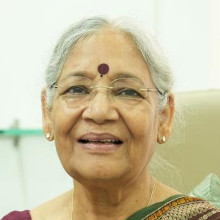
Akhilesh Rai on Jul 05, 2024 10:43 p.m. said
Had to read the article twice to fully comprehend the excellence of narration.Graphic details,context,history and present perspectives are all there .All subjects like Kahlo’s art,architecture,culinary excellence and elections are described with a professional touch.To cap it all the language creates a perfect literary treatise and not just a travelogue.